
CarlFriedrich Benz was a German engine designer and automotive engineer. His Benz Patent-Motorwagen from 1885 is considered the first practical modern automobile and first car put into series production. He received a patent for the motorcar in 1886, the same year he first publicly drove the Benz Patent-Motorwagen.
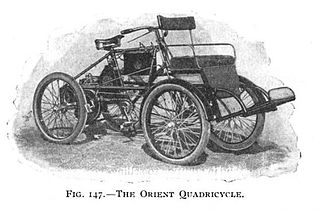
The Quadricycle was an early form of automobile. Earliest models were propelled by a small steam engine, then designers switched to early internal combustion engines as they became available. The word is derived from the fact that it had four wheels and used a lot of technology from the bicycles of the era.

L'Aster, Aster, Ateliers de Construction Mecanique l'Aster, was a French manufacturer of automobiles and the leading supplier of engines to other manufacturers from the late 1890s until circa 1910/12. Although primarily known as an engine mass manufacturer the company also produced chassis for coach-works and a complete range of components.
Steyr-Daimler-Puch was a large manufacturing conglomerate based in Steyr, Austria, which was broken up in stages between 1987 and 2001. The component parts and operations continued to exist under separate ownership and new names.

A drive shaft, driveshaft, driving shaft, tailshaft, propeller shaft, or Cardan shaft is a component for transmitting mechanical power, torque, and rotation, usually used to connect other components of a drivetrain that cannot be connected directly because of distance or the need to allow for relative movement between them.

A de Dion axle is a form of non-independent automobile suspension. It is a considerable improvement over the swing axle, Hotchkiss drive, or live axle. Because it plays no part in transmitting power to the drive wheels, it is sometimes called a "dead axle".

De Dion-Bouton was a French automobile manufacturer and railcar manufacturer, which operated from 1883 to 1953. The company was founded by the Marquis Jules-Albert de Dion, Georges Bouton, and Bouton's brother-in-law Charles Trépardoux.

The Mercedes Simplex was an automobile produced from 1902 to 1909 by the Daimler Motoren Gesellschaft. It continued the use of the Mercedes name as the brand of DMG, rather than Daimler.

Gräf & Stift was an Austrian manufacturer of automobiles, trucks, buses and trolleybuses, from 1902 until 2001, latterly as a subsidiary of MAN.

The De Boisse, was a French automobile manufactured from 1901 until 1904 by Jacques de Boisse in Paris.
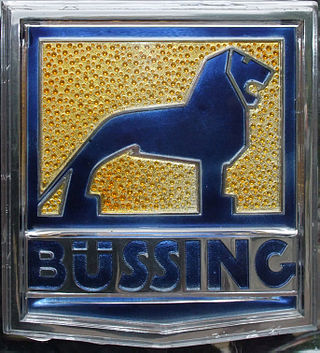
Büssing AG was a German bus and truck manufacturer, established in 1903 by Heinrich Büssing (1843–1929) in Braunschweig. It quickly evolved to one of the largest European producers, whose utility vehicles with the Brunswick Lion emblem were widely distributed, especially from the 1930s onwards. The company was taken over by MAN AG in 1971.

Straker-Squire was a British automobile manufacturer based in Bristol, and later Edmonton in North London.
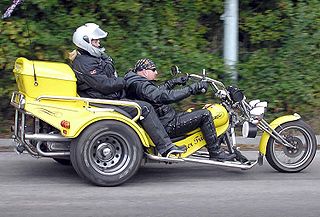
A motorized tricycle, motor trike, or motortrycle is a three-wheeled vehicle based on the same technology as a motorcycle, and powered by an electric motor, motorcycle, scooter or car engine.

The Auto-Bi was an early motorcycle made by the Thomas Motor Company in Buffalo, New York. According to many sources, it was the first motorcycle widely available for sale in the United States.
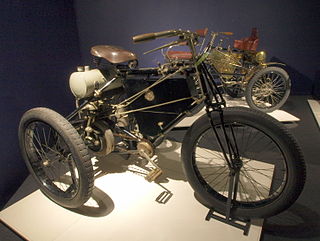
The De Dion-Bouton tricycle was the most successful motor vehicle in Europe from 1897 until 1901. With about 15,000 copies sold, the de-Dion-Bouton motor tricycle scored the first breakthrough for the distribution of motor vehicles. In particular the fast-running de Dion-Bouton engine set new standards for vehicular motors, and is regarded as the precursor of all motorcycle engines.

Société Parisienne was a French manufacturer of velocipedes, bicycles and tricycles from 1876. They began limited automobile construction in 1894 and regular light car (voiturette) construction in 1898 or 1899, and they ceased operation in 1903. The vehicles, variously known as Parisienne, Victoria Combination, Eureka, l'Eclair, Duc-Spider and Duc-Tonneau, were manufactured by Société Parisienne E. Couturier et Cie of Paris.
Rétrospectives Automobiles Miniatures was a French manufacturing company that made diecast scale model collector vehicles mostly of classic French automobiles in 1:43 scale. The acronym was seen on packaging without the periods between the letters of the acronym, but on some of the vehicle bases with the punctuation. "J.M.K." was a further acronym that stood for the three founding members of the company: M. Jarry, Henri Malartre and M. Koch. Though the models were often known simply as RAMI, the full name of the company was RAMI by J.M.K.
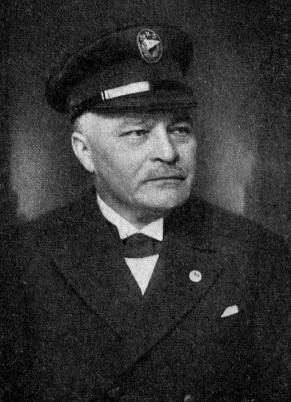
Max Wenkel was a German automobile pioneer and inventor.

The Horley Motor & Engineering Co. Ltd was a British automobile manufacturer in Horley, Surrey, producing light vehicles between 1904 and 1909. The brand names were Horley and No Name. Horley collaborated with Lacoste & Battmann, the French supplier of vehicle components, assemblies and unbranded vehicles equipped with Aster, De Dion-Bouton or Mutel engines.
AG für Akkumulatoren- und Automobilbau was a Prussian German automobile manufacturer based in Wedding (Berlin), Ofenerstrasse and founded by Alex Fischer who built electric powered automobiles from 1919 to 1922 under the brand name AAA.

















